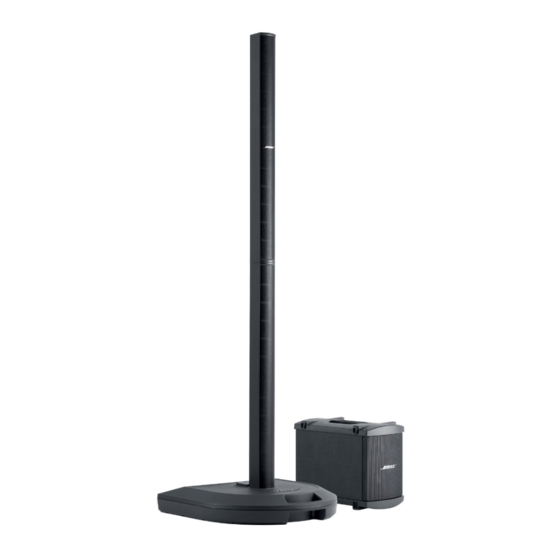Bose Personalized Amplification System Manuel de dépannage - Page 31
Parcourez en ligne ou téléchargez le pdf Manuel de dépannage pour {nom_de_la_catégorie} Bose Personalized Amplification System. Bose Personalized Amplification System 50 pages.
Également pour Bose Personalized Amplification System : Manuel du propriétaire (28 pages)

Bass Module Tests
Connect the Bass Module under test to an
amplifier using the test cables described in
the appendix of this troubleshooting guide.
1. Air Leak Test
1.1 Apply a 100 Hz, 10 Vrms sine wave to
the unit under test.
1.2 Listen carefully for air leaks from around
the end cap, the transducers and the grille.
Air leaks will be heard as a hissing or sput-
tering sound. All repairs must be hidden.
Test duration should be 5 seconds minimum.
2. Transducer Rub and Tick Test
2.1 Remove the transducer you wish to test
using the disassembly procedures in this
manual. Do not unplug the wires at the
transducer assembly terminals.
2.2 Connect the transducer to an amplifier
that is driven by an audio signal generator.
Connect directly to the terminals of the
transducer assembly under test.
2.3 Apply a 10 Hz, 10 Vrms signal to the
transducer assembly.
2.4 Listen carefully for any extraneous
noises such as rubbing, scraping or ticking.
Note: To distinguish between normal sus-
pension noise and rubs or ticks, displace the
cone slightly with your fingers. If the noise
stays the same, it is normal suspension
noise and the driver is good. Suspension
noise will not be heard with program mate-
rial.
TEST PROCEDURES
31
3. Transducer Phase Test
3.1 Momentarily apply a DC voltage of 10V,
positive applied to the positive terminal of
the test cable and GND connected to the
GND terminal. The bass module test cable
is described in the appendix of this trouble-
shooting guide.
3.2 With the DC voltage applied, both of the
driver cones should move outward.
3.3 Rewire any incorrectly wired driver.
4. Bass Module Sweep Test
4.1 Connect the B1 bass module to an
amplifier that is driven by an audio signal
generator. Use the bass module test cable
described in the appendix of this service
manual.
4.2 Apply a 10Hz, 10Vrms sine wave to the
input of the bass module.
4.3 While listening to the output of the bass
module, sweep the input frequency slowly
from 10Hz to 400Hz. Test duration should be
5 seconds minimum.
4.4 Listen carefully for any extraneous
noises such as buzzing and ticking.
Note: To distinguish between normal sus-
pension noise and rubs or ticks, displace the
cone slightly with your fingers. If the noise
stays the same, it is normal suspension
noise and the driver is good. Suspension
noise will not be heard with program mate-
rial.
